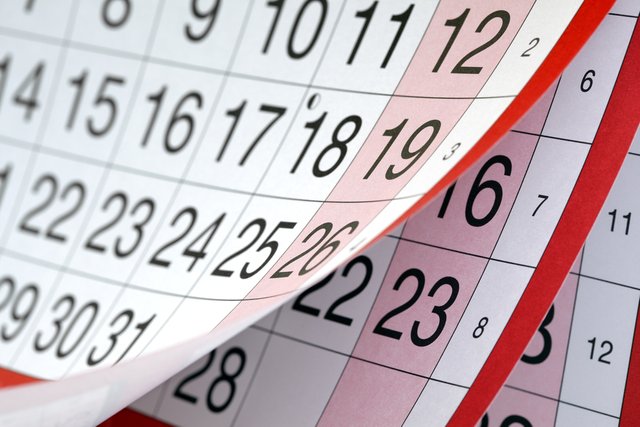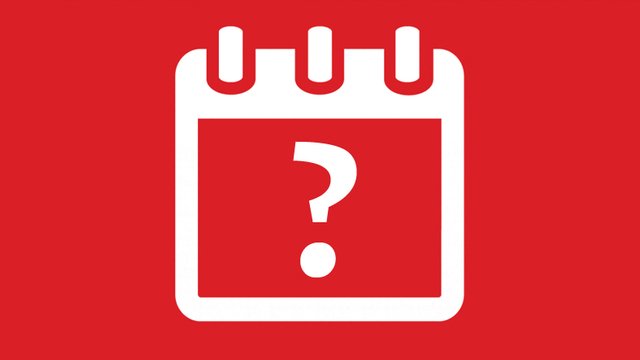A Great Method to Calculate Which Date Matches Which Day
It may seem difficult to find out, "Which day do you born?" Or "Which day will date October 29, 2443?" But the math full of amazing mysteries offers us a very practical way.
People remember the dates that are important to them in terms of months and years. These dates are forgotten over time. It can be difficult to find out which date matches on which date. At least if you are interested in calendars and mathematics, you can see that the days are not random. For this reason, a simple algorithm has been developed to calculate which date corresponds to which date.

This technique, developed by mathematician John Conway, is called Doomsday Algorithm. The name may be a bit scary, but the technique you offer is really tremendous. Because there is a description of the days we live and how we do not realize how it is.
There are a few calendar features that we need to know before computing the Day of the Day algorithm to match what date any day:
- Residual year: every 4 years, we live 365 days, not 365 days a residual years. One such daily excess is due to the fact that a standard year is actually 365 and 6 hours long. Next year, we live 365 days 12 hours, the next 365 days 18 hours, and finally 365 days 24 hours a year. That is 366 days and the process is back to the beginning. That's why it lasts 29 days in February every 4 years.
- It is also easy to calculate any day in 365 days of standard years and the equivalent future day in the following year. For example, Monday, January 22, 2018 will be Tuesday, January 22, 2019. In other words, by adding one to the current sun in standard years, we can find out what day will come after exactly one year. The only exception is that the next year is a 2-day shift, not a 1 if it is a residual year. For example, Tuesday, January 22, 2019, Thursday 22 January 2020 will not be Wednesday. Because 2020 is now a year.

To calculate the progression method:
Normally, it is possible to fully explore the path proposed by Conway. Because it has a close connection with the mathematics of the year and the year corresponding to the same day every year. But in order not to distract you too much, let's take a few examples. The form has a code with a number every month and day.
Month codes:
- January: 1
- February: 4
- March: 4
- April: 7
- May: 2
- June: 5
- July: 7
- August: 3
- September: 6
- October: 1
- November: 4
- December: 6
Day codes:
- Sunday: 1
- Monday: 2
- Tuesday: 3
- Wednesday: 4
- Thursday: 5
- Friday: 6
- Saturday: 7
You have noticed that these codes are not given by month or by day. Based on Conway's ranking criteria, Conway points out that the correct result will be reached in the form we will give soon after the calculations he has made. We will also need the date code, but this code will depend on what day of the month we want to calculate. (For example, if the curious date is December 11, the date code will be 11)

Now let's come to the formula and our example:
Let us deal with the date of October 29, 1923. We need the following form to know which day it came to:
DC: Date Code
MC: Month Code
XC: Day Code
YC: Year Code
- (DC / 7) + MC + (YC / 7) + (Years / 4) / 7 = XC
In the above form we are processing the remainder of the division process in the red region. We also dedicate one hundred years to include the "Year" value in the formula. In other words, the year 1923 is included in the calculation as 23. (The same for years after 2000. For example, to calculate a date in 2076 we take Y=76)
Our date code is 29. The figure after the 29/7 process is 1.
Our lunar code is the 1 listed above for the month of October.
We are subtracting 1900 from 1923 to calculate our year code. 23, and the number 23 from the 23/7 process is our year code.
The last part (Year / 4) / 7 is fixed. For this reason, we divide the number 23 by 4, the result is 5, we do not care about the remaining 3. Then we divide 5 by 7 and the remaining automatically becomes 5. So for this date we write 5 in this part of the formula. (If the result of 4 is smaller than the result of 7, you can directly process it.)
We find out at the end of our day code that we find out what day it coincides with when we learn from the table above. Now let's put the numbers in your form:
1 + 1 + 2 + 5 = 9, we find the result of our operation.
If we get a bigger result than 7, as we did here, we get 7:
9 - 7 = 2
Our day code matches Monday on my table. That is, October 29, 1923, Monday.
@fresteem @superbot @hottopic @resteemr
Congratulations @cloudtv! You received a personal award!
Click here to view your Board of Honor
Congratulations @cloudtv! You received a personal award!
You can view your badges on your Steem Board and compare to others on the Steem Ranking
Vote for @Steemitboard as a witness to get one more award and increased upvotes!